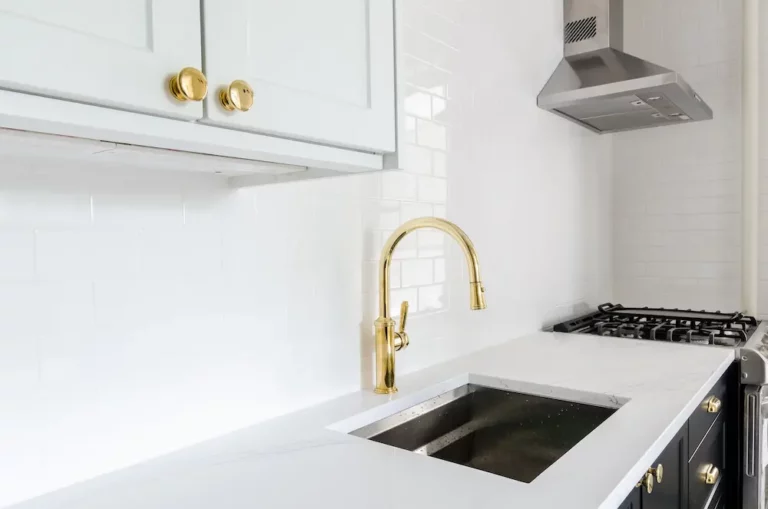Stop Mice in Their Tracks: Preventing Infestations in Upstairs Apartments
Dealing with mice in an upstairs apartment left me scratching my head at first. How did they even get up here? It turns out these furry invaders are more resourceful than we give them credit for. They don’t just limit themselves to ground-floor invasions; they’re quite the climbers and can find their way into our living spaces from seemingly impossible routes.
Understanding mice’s behavior and preferred entry points is crucial in addressing and preventing infestations. In my quest to maintain a pest-free living space, I’ve learned a thing or two about their sneaky ways. Let’s explore how these unwelcome guests find their way into our upstairs sanctuaries.
Introduction to Mouse Infestations in Upstairs Apartments
When I first heard scratching noises from my ceiling at night, I couldn’t believe I was dealing with a mouse infestation in my upstairs apartment. It seemed unlikely, given the height and location, but soon enough, evidence made it clear. The thought of mice finding their way up here was baffling. How did they do it?
First off, it’s crucial to acknowledge that mice are incredible climbers and can squeeze through gaps the size of a dime. They utilize pipes, wires, and even rough surfaces as ladders to navigate to higher grounds. Their flexibility and determination are why upstairs apartments aren’t immune to invasions.
One of the most shocking facts I learned is that structural exclusion is key in preventing these unwelcome guests. This means identifying and sealing any openings larger than a dime with durable materials. Surprisingly, expanding foam, which seems like an easy fix, is a no-go. Mice find it easy to chew through, somewhat enjoying the process. Instead, steel mesh and metal hardware cloth are recommended for creating barriers around vulnerable points, such as where pipes enter buildings.
The entry points for these rodents aren’t limited to ground-level gaps. Beneath doors and garage doors are common access points, which I hadn’t considered. Having tight-fitting door sweeps installed, especially those with metal or hard plastic edges, is an effective and economical approach to keep mice out.
In my quest for a mouse-free living space, the advice didn’t stop there. I learned about the importance of installing dryer vent covers, crawl space vent covers, chimney caps, and keeping trees trimmed 6-8 feet from the roofline. These steps reduce the chances of mice and squirrels making a home in my space.
Common Entry Points for Mice
Mice invading upstairs apartments can baffle anyone. Yet, their agility and size grant them entry through means we often overlook. Let’s delve into the common ways these determined rodents find their way into our elevated sanctuaries.
Through Cracks and Gaps
First and foremost, mice are masters of squeezing through the smallest openings. I’ve learned that they can fit through gaps as tiny as a dime. Cracks between the tub and tile floor or around windows and doors that aren’t sealed properly serve as perfect entryways for these tiny invaders. It’s astonishing how these seemingly insignificant cracks can lead to significant infestations. I always stress the importance of a thorough inspection of our homes for any potential entry points and sealing them with durable materials like steel mesh, which mice can’t chew through.
Ventilation Systems
Another surprising access point for mice is through our ventilation systems. Roof vents, chimneys, and even dryer vent covers can all be gateways for mice into our homes. These areas, especially if not properly secured, provide not only an entry point but also a hidden pathway throughout our apartments. Installing proper chimney caps and ensuring vent covers are secure and intact can greatly reduce the risk of mice using these systems as their personal highways.
Plumbing and Utility Lines
The complexity of plumbing and utility lines offers another route for mice into our homes. Mice use interior pipes and wires that run through walls or ceilings, gripping tightly around these structures with their sharp toes. It’s essential to inspect where these lines enter our homes. I’ve personally seen how effective it is to adjust and form steel mesh around these areas, preventing mice from gaining access while still allowing the necessary utilities to function correctly.
Shared Spaces and Infrastructure
Lastly, shared spaces and the very infrastructure of our buildings can unwittingly invite mice into our apartments. Balconies, fire escapes, and even the spaces between floors can harbor mice if there are plants, furniture, or other items that provide cover. I’ve come to understand that maintaining cleanliness and minimizing clutter in these areas can discourage mice from settling in. In multiplexes or apartment buildings, it’s vital to work collectively with neighbors and property management to ensure a unified defense against rodent invasions.
Factors Attracting Mice to Upper Floors
Searching for Food and Shelter
I’ve always wondered how these tiny creatures make their way to the upper floors of buildings, especially apartments that seem to be well-sealed. It turns out mice are attracted to higher floors primarily in search of food and shelter. I learned that our leftover pizza boxes and the crumbs we fail to sweep up are practically an open invitation for these rodents. Kitchens are like gold mines for mice, offering an almost endless supply of food scraps. In addition, the warmth and shelter provided by our apartments, especially during colder months, make them the perfect haven for mice looking for a cozy home. It’s incredible how even the smallest amount of food waste or an improperly sealed food container can draw mice into our living spaces.
Neighboring Infestations
Another eye-opener for me was discovering that an infestation in a neighboring apartment could easily spread to mine. Mice don’t respect our human-imposed boundaries and will traverse through tiny holes and cracks in shared walls, ceilings, and floors to expand their territory. If one apartment has an issue with mice, it’s not long before surrounding units become affected, too. This is particularly troubling in apartment complexes where units are closely knit together. It’s like a domino effect; once mice find a suitable environment in one apartment, they’re likely to explore adjacent spaces in search of more resources.
Human Activity and Behaviors
Lastly, I realized that our own activities and behaviors play a significant role in attracting mice to the upper floors. Things like leaving windows or balcony doors ajar for ventilation provide easy access points for these critters. Moreover, the clutter we accumulate, which may seem harmless to us, offers excellent hiding spots for mice. It’s not just about food; our very lifestyle can inadvertently create a welcoming environment for these unwelcome guests. Simple actions, such as reducing clutter and ensuring windows and doors are well sealed, can significantly deter mice from considering our upstairs apartments as their next destination.
Preventive Measures to Deter Mice
Dealing with a mouse infestation can be quite a hassle, especially when those little creatures decide to venture into the upper floors of our apartments. Luckily, there are several effective strategies for keeping them at bay. Let’s delve into some of the crucial steps I’ve taken that can help you keep these unwelcome guests out of your living space.
Sealing Entry Points
One of the first steps I took was to thoroughly inspect my apartment for any potential entry points. I learned that mice could fit through gaps and holes the size of a dime! So, I went around my apartment, identifying and sealing any holes that were dime-sized or larger. It turns out that materials like steel mesh and metal hardware cloth are excellent for this purpose, as they can be trimmed to fit and are durable enough to prevent rodents from getting through. Expanding foam, which I initially thought would be a good idea, wasn’t recommended because mice can chew through it surprisingly easily.
Remember to check for:
- Cracks in walls and around windows
- Holes in the floor near corners or where it meets the walls
- Gaps around pipes entering the apartment
Maintaining Cleanliness
It might seem obvious, but maintaining a clean apartment is another critical defense against mice. They are attracted to spaces where they can find food easily. So, I made it a habit to regularly vacuum and clean all areas of my apartment, especially the kitchen. One thing I found particularly effective was ensuring that crumbs and food spills were cleaned up immediately. It’s also a good idea to declutter periodically. Mice love to hide in cluttered areas, so the less clutter, the fewer hiding spots they’ll have.
Proper Food Storage
The way we store our food can make a big difference in deterring mice. I learned that storing food in airtight containers is a must. Mice have an incredible sense of smell and can be drawn to even the slightest scent of food. By keeping all my food in sealed containers, I was not only able to keep mice away but also keep my food fresher for longer. It’s especially important to store grains, pet food, and other dry goods in sturdy containers that mice can’t chew through.
By following these simple yet effective measures, I’ve been able to significantly reduce the risk of mice venturing into my upstairs apartment. Remember, the key is to be proactive and stay vigilant, ensuring that our homes remain unattractive to these persistent pests.
Steps to Take if Mice Enter Your Apartment
Discovering mice in your upstairs apartment can be startling. I’ve dealt with it before, and I’ll share some effective steps to manage the situation. Let’s dive into how you can regain control of your space.
Identification and Cleaning
The first thing I did was to identify signs of unwelcome guests. Mice leave droppings, gnaw on items, and create nests from shredded materials. Once I spotted these signs, I knew it was time for a thorough cleaning. Keeping your living space clean and clutter-free is crucial. Mice are attracted to food remnants and easily hide in cluttered areas. So, I made it a habit to vacuum and wipe surfaces daily, ensuring food is stored in airtight containers, and garbage is taken out regularly. This step doesn’t just help in identifying their presence but also makes your apartment less appealing to them.
Setting Traps and Bait
After cleaning, the next step I took was setting traps and bait. There’s a variety of options available, including snap traps, live traps, and bait stations. I found that placing traps near walls, under furniture, and other secluded areas where mice travel gave the best results. Baiting the traps with peanut butter, chocolate, or cheese made them irresistible to the mice. It’s important to check and reset the traps regularly. For those who prefer a more humane method, live traps allow you to catch and release the mice far from your home.
Consulting Professionals
Sometimes, despite our best efforts, the mouse problem persists. In such cases, it’s wise to consult professionals. Pest control experts can offer solutions tailored to your specific situation. They have access to more effective tools and techniques for eradicating mice from your home. I learned that professionals could also identify and seal entry points I’d missed, preventing future invasions. Remember, there’s no shame in seeking help. Ensuring your living space is safe and comfortable is a priority, and professionals can play a key role in achieving that.
Conclusion
Dealing with mice in upstairs apartments can seem daunting at first, but remember, it’s all about taking the right steps. I’ve found that staying vigilant for signs of mice and maintaining a clean environment is key. I can’t stress enough how setting up traps and consulting professionals have been game-changers for me. It’s not just about getting rid of them once but keeping them out for good. So let’s roll up our sleeves and keep our homes mouse-free together!
FAQ – Frequently Asked Questions
How do I find out where my mouse is getting into my apartment?
To detect mouse entry points, inspect areas around pipes, vents, and cables for holes. Additionally, check the building’s foundation for crumbling mortar or cracks, as these are common access routes for mice.
Should I be worried about a mouse in my apartment?
Yes, immediate action is required if a mouse enters your apartment. Mice reproduce rapidly and can cause significant damage to walls, belongings, and even electrical wiring.
Do mice travel between apartments?
Yes, mice can easily travel between apartments. They exploit small openings and can navigate through loose foundation materials, roof holes, and systems like heating and cooling, as well as move horizontally through walls, vents, and ceilings.




